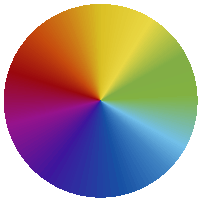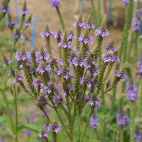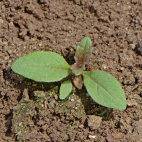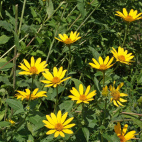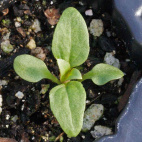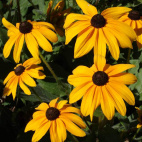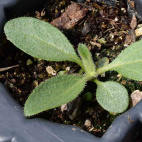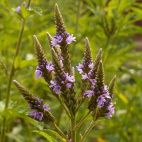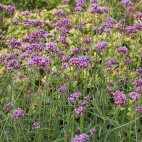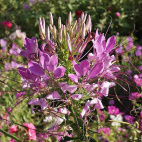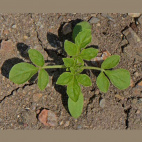Color
Availability
USDA Zone
Region
Type
Duration
Season
Germination
Soil
Sunlight
Height
Use
Narrow Your Search
Color
Availability
USDA Zone
Region
Type
Duration
Season
Germination
Soil
Sunlight
Height
Use
Wildflower Seeds - Northern Region
The Northern region is home to our Canadian friends in the eastern provinces, as well as the northern-most part of the Eastern US. This area is characterized by a long, cold winter with lots of snow, and a short humid summer that only lasts about 3 or 4 months. Most of the area is classified as a UDSA Growing Zone 4 or less, and the species that grow here have interesting ways to perpetuate themselves in spite of the short growing season. There are a lot of forests and wetlands in this region, so adequate moisture is hardly ever a problem. Look up your growing zone to make sure that the Northern wildflower seeds that you want to grow are winter hardy. Alternatively, just order annual flower seeds online so that the plant does not need to make it through the winter, but can reseed itself and come back from seed the next year.
-
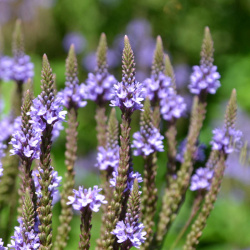 On Sale!
Blue Vervain Seeds
Verbena hastata
These small blue blooms grow on tall stems and are frequently found growing in moist areas. This native attracts a variety of butterflies and is often used in wildflower seed mixes.Quick View$3.48 Pkt - $12.65 / Oz
On Sale!
Blue Vervain Seeds
Verbena hastata
These small blue blooms grow on tall stems and are frequently found growing in moist areas. This native attracts a variety of butterflies and is often used in wildflower seed mixes.Quick View$3.48 Pkt - $12.65 / Oz -
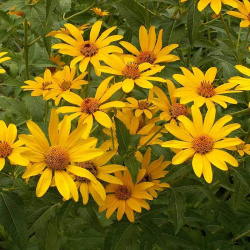 Early Sunflower Seeds
Heliopsis helianthoides
This native sunflower is a showy perennial and comes back year after year. Enjoy the sunshine all summer long with these bright yellow wildflowers, which also can be used for long-lasting floral arrangements.Quick View$3.48 Pkt - $7.65 / Oz
Early Sunflower Seeds
Heliopsis helianthoides
This native sunflower is a showy perennial and comes back year after year. Enjoy the sunshine all summer long with these bright yellow wildflowers, which also can be used for long-lasting floral arrangements.Quick View$3.48 Pkt - $7.65 / Oz -
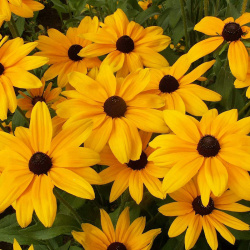 Indian Summer Black Eyed Susan Seeds
Rudbeckia hirta
Summer glows a little longer with these giant golden blooms. This biennial is easy to grow and usually blooms late in its second year with huge and showy flowers.Quick View$3.75 Pkt - $176.00 / Oz
Indian Summer Black Eyed Susan Seeds
Rudbeckia hirta
Summer glows a little longer with these giant golden blooms. This biennial is easy to grow and usually blooms late in its second year with huge and showy flowers.Quick View$3.75 Pkt - $176.00 / Oz -
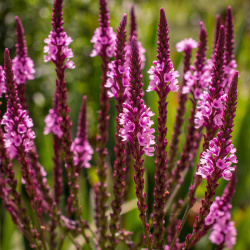 Out Of Stock
Pink Vervain Seeds
Verbena hastata rosea
Pretty as pink, these native plants are a rare natural variation of the common Blue Vervain. They come back year after year, and also produce a lot of seeds that carry the pink trait.Quick Viewx
Out Of Stock
Pink Vervain Seeds
Verbena hastata rosea
Pretty as pink, these native plants are a rare natural variation of the common Blue Vervain. They come back year after year, and also produce a lot of seeds that carry the pink trait.Quick ViewxPink Vervain Seeds
Verbena hastata rosea
Pretty as pink, these native plants are a rare natural variation of the common Blue Vervain. They come back year after year, and also produce a lot of seeds that carry the pink trait.
$2.98 Pkt - $11.03 / Oz -
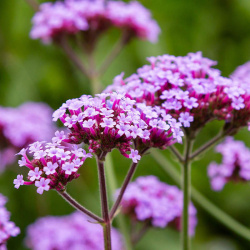 On Sale!
Purpletop Vervain Seeds
Verbena bonariensis
An excellent choice for a border plant, our Verbena Bonariensis for sale features clusters of deep lilac blossoms showcased on tall slender stems. This South American perennial is easy to grow and is very attractive to butterflies such as the Monarchs, Swallowtails, and Fritillaries.Quick Viewx
On Sale!
Purpletop Vervain Seeds
Verbena bonariensis
An excellent choice for a border plant, our Verbena Bonariensis for sale features clusters of deep lilac blossoms showcased on tall slender stems. This South American perennial is easy to grow and is very attractive to butterflies such as the Monarchs, Swallowtails, and Fritillaries.Quick ViewxPurpletop Vervain Seeds
Verbena bonariensis
An excellent choice for a border plant, our Verbena Bonariensis for sale features clusters of deep lilac blossoms showcased on tall slender stems. This South American perennial is easy to grow and is very attractive to butterflies such as the Monarchs, Swallowtails, and Fritillaries.
$3.48 Pkt - $15.95 / Oz -
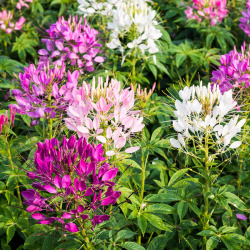 Spider Plant Seeds
Cleome hassleriana
Traditionally grown in Thomas Jefferson's Monticello estate, this showy Cleome Hassleriana plant bursts with pink and white blossoms. The hardy annual grows relatively tall and readily reseeds itself for the next growing season.Quick View$3.48 Pkt - $8.46 / Oz
Spider Plant Seeds
Cleome hassleriana
Traditionally grown in Thomas Jefferson's Monticello estate, this showy Cleome Hassleriana plant bursts with pink and white blossoms. The hardy annual grows relatively tall and readily reseeds itself for the next growing season.Quick View$3.48 Pkt - $8.46 / Oz
The Northern region is home to our Canadian friends in the eastern provinces, as well as the northern-most part of the Eastern US. This area is characterized by a long, cold winter with lots of snow, and a short humid summer that only lasts about 3 or 4 months. Most of the area is classified as a UDSA Growing Zone 4 or less, and the species that grow here have interesting ways to perpetuate themselves in spite of the short growing season. There are a lot of forests and wetlands in this region, so adequate moisture is hardly ever a problem. Look up your growing zone to make sure that the Northern wildflower seeds that you want to grow are winter hardy. Alternatively, just order annual flower seeds online so that the plant does not need to make it through the winter, but can reseed itself and come back from seed the next year.

